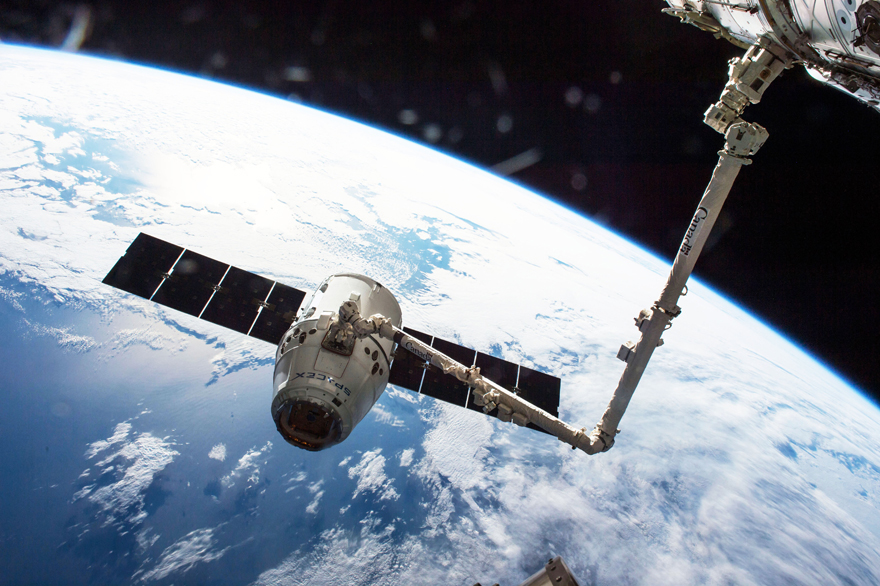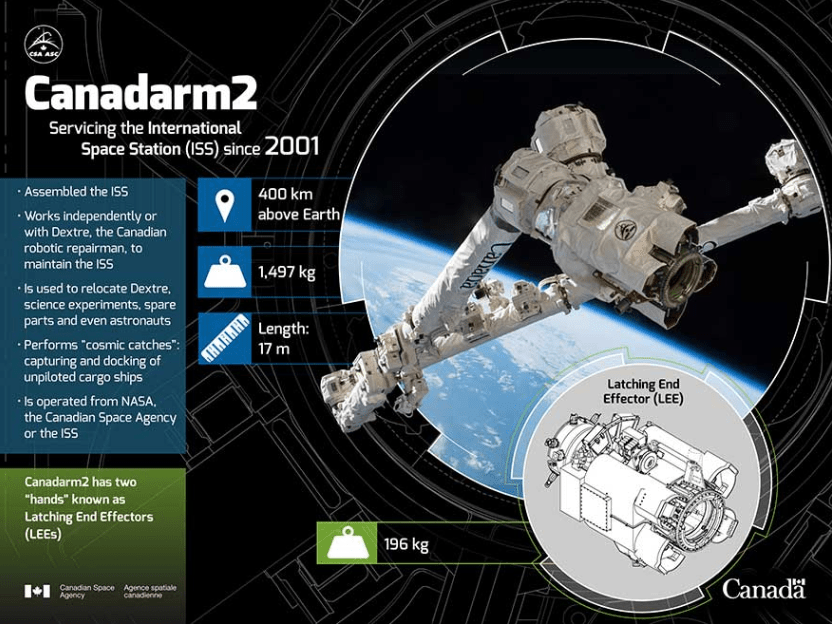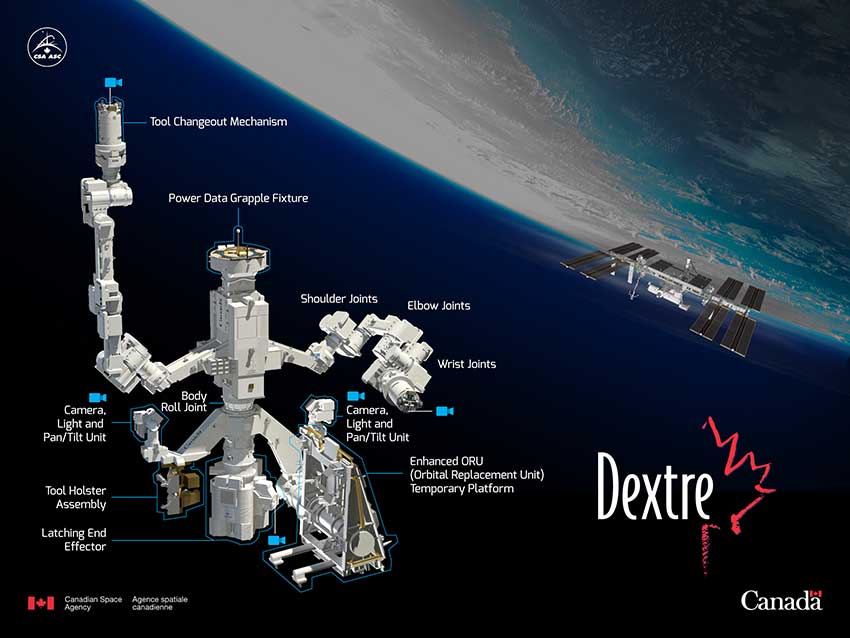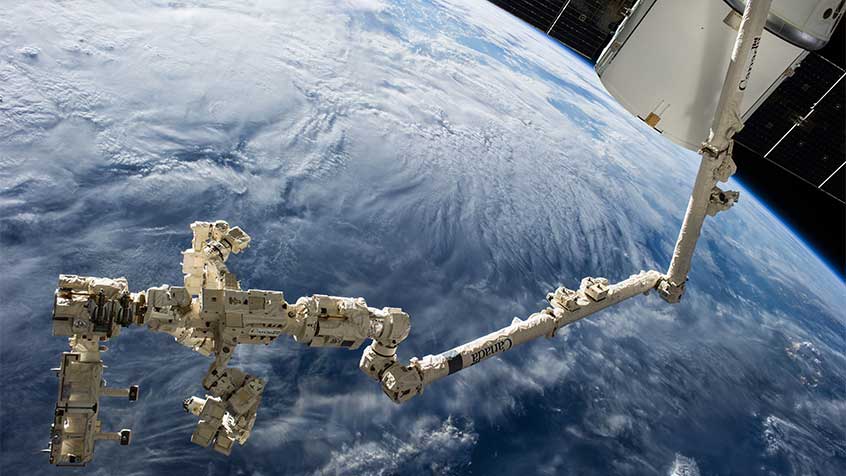Check out this image of the Canadian Space Agency’s (CSA) Canadarm2 on the International Space Station. The CSA’s Dextre is attached to one end of the arm. The Canadarm2 played a vital role in assembling the ISS, while Dextre helps maintain the ISS, freeing astronauts from routine yet dangerous spacewalks, and allowing them to focus on science.
Canadarm2 was first deployed on the ISS in 2001, and the 17 meter (56 ft.) long robotic arm has helped assemble and maintain the station since then. Together with Dextre and the Mobile Base System, the Canadian robotics contribution to the ISS performs important maintenance tasks. It also reaches out to visiting spacecraft and helps them dock with the ISS.

The Canadarm2 isn’t confined to one location. It can move around the station like an inch-worm, as long as one end of the robotic arm is attached to one of the power data grapple fixtures located at key points on the ISS.

Dextre joined the Canadarm2 on the ISS in 2008. In 2011 it unpacked cargo from the Kounotori 2, while the crew was sleeping. Not bad, Dextre. Must be why it’s called the most sophisticated piece of space robotics ever built.
Dextre has several cameras to help operators maneuver it around on the outside of the ISS. It even has a camera inside each of its two “hands.”

In 2021 the CSA is upgrading Dextre with the Dextre Operated Camera (DOC.) The DOC will help Dextre monitor the condition of the ISS, and also help it with docking spacecraft, as well as other tasks.

Together, Canadarm2 and Dextre make a potent team, and it’s hard to imagine the ISS without them. The animation below shows the pair going about their business. The animation is faster than the real working pace of the pair.
In Canada, Canadarm2 and Dextre are kind of a big deal. Canada is a high-tech nation, but with a smallish population compared to the USA, and Canada has a history of excellence in robotics. Canada even put Dextre and Canadarm2 on their $5 dollar bill.
In the video below, Canadian astronaut Chris Hadfield talks about the contribution made by Canadarm 2 and Dextre.
The development of Canadarm2 and Dextre have made an impact beyond the ISS. They’ve led to technologies that are changing the way we do some things here on Earth. They’ve led to the development of:
- neuroArm, the world’s first robot capable of performing brain surgery inside an MRI machine
- IGAR, precision technology accelerating breast cancer diagnosis and treatment
- Modus V, a robotic digital microscope set to transform the way surgery is performed in hospitals
Maybe our future isn’t so dim, after all. Maybe after the coming AI Singularity, humans won’t be banished to a sub-terranean existence, running in fear from our new robotic overlords. Instead, maybe our new robot masters will serve us benevolently, performing surgery, charging our electric car batteries for us, and telling us when we have cancer.
If that comes to pass, we can thank Dextre and the Canadarm2. And Canada.

